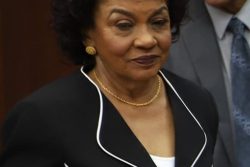Following criticisms by former Petroleum Advisor Jan Mangal about the sloth regarding a proposed natural gas- to-shore project, the government says that it “well advanced” and that there are also plans in the pipeline to engage the Private Sector.
“Dr Bynoe noted that one of those activities currently being explored is ‘bringing gas to shore’.” This, he said, is “well advanced”, the Department of Public Information (DPI) stated on Monday as it quoted the Director of the Department of Energy, Dr Mark Bynoe.
“We have a draft memorandum of understanding and a very cogent working group made up of critical players within the government. We hope to engage the private sector as well so that they can understand what the opportunities are,” Bynoe also informed.
According to the DPI, Bynoe emphasised the need for private sector engagement as it is important to create an environment for investments to be made.
Former Petroleum Advisor Jan Mangal last week flayed the David Granger-led APNU+AFC government for its sloth in the implementation of a proposed gas-to-shore project saying that ExxonMobil’s flaring of over nine billion cubic feet of natural gas could have been avoided if the project was in place.
He disclosed that ExxonMobil had already established a team to discuss the project and the Inter-American Development Bank (IDB) had said that it would fund a feasibility study of this country’s coastline to determine the most suitable location for the landing of the pipes and setting up of a power station.
Accusing some government ministers of rejecting the IDB’s offer to instead handpick a site, Mangal contended that the feasibility study could have been completed by now and plans on bringing the have been advanced.
Back in 2018 he had insisted that there be no flaring and that gas be brought to shore for electricity, fertiliser and other uses.
“You have all of this natural gas and it is being flared for lack of a pipeline project. It was very important that the pipeline project be set up and we did have such a plan. Exxon had a team in Houston that I used to meet … Exxon was prepared to move forward but the slowness was on the government’s side,” he said.
“I suspect that there was individual interest on where to bring the pipeline to shore… I was worried at the slowness at which the people in government operated and maybe wanted to influence the project so they could benefit personally. There was no reason for this project to not have taken off,” he added.
He noted that in his capacity as Petroleum Advisor to the President, he had met with Exxon’s team and plans were forging ahead as Exxon believed that bringing the gas to shore would not have been very complicated but they would need to know from policymakers here, where the pipes would land in order to plot the bed and coordinates.
ExxonMobil would have already done an offshore survey of the sea bed so he believed it would not have been difficult after a location was determined.
The APNU+AFC government has proposed that as it seeks to transition to renewable energy, that natural gas be brought onshore in the interim and talks have been ongoing with ExxonMobil to this end.
Up to last year, ExxonMobil’s Country Representative Rod Henson had said that the discussions were still ongoing towards this end and that if an agreement was reached soon, Guyana could see natural gas being used in its energy mix by 2022.
According to the DPI, Dr Bynoe reiterated commitment to ensuring that a “state of the art, contextually relevant industry best-practice department” is established to manage the oil and gas sector.
“We are beginning to build out that structure to allow us to not only have a state-of-the-art department but at the same time to allow us to take advantage of the technological advances, the development and articulation of a robust legislative framework and pursue avenues that will allow for greater cost efficiencies,” Bynoe explained.




